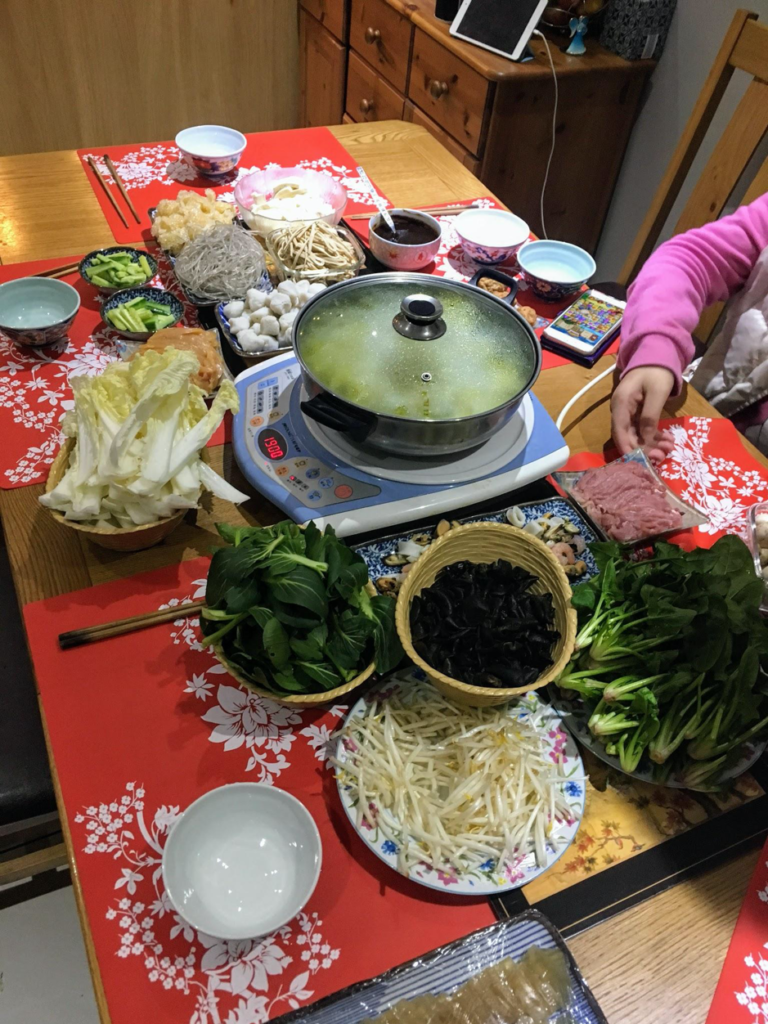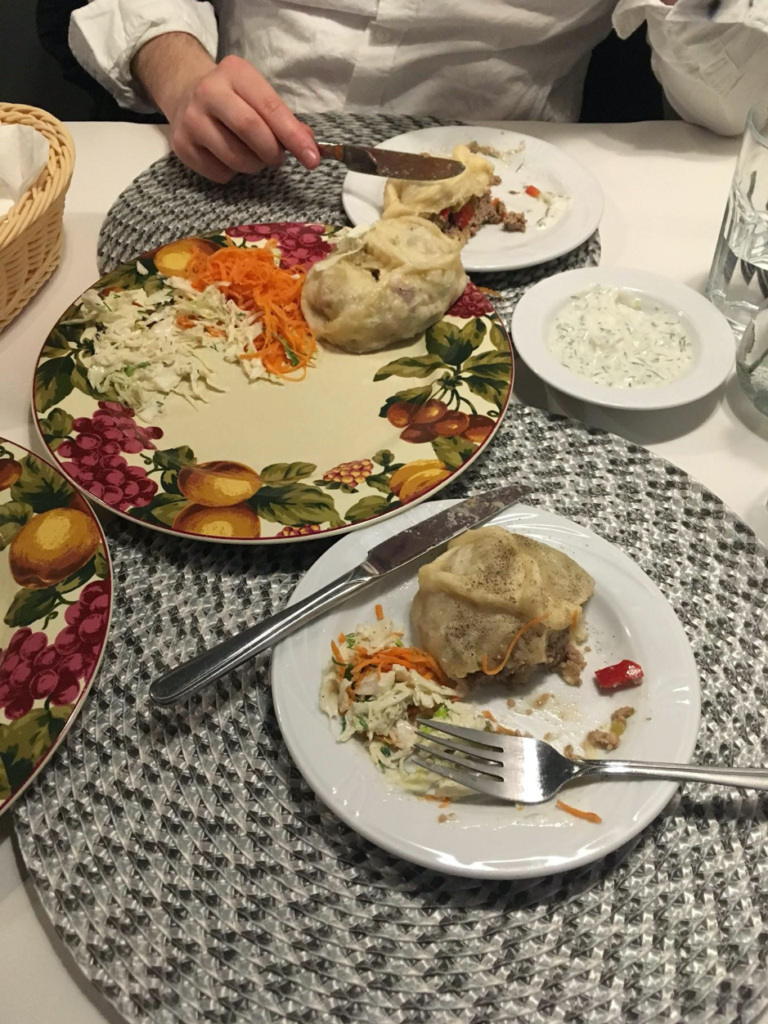Crossing Culinary Borders - A Gentle Guide
Yanmin Zhuchen, UK
15 January 2021
As someone who loves food and travel, I have often been struck by the similarities between dishes and cuisines that on first glance have no real geographical, religious or historical link and how, with a few changed ingredients and perhaps a different method of cooking, familiar foods suddenly become new and exciting. When does the bowl of spicy Dandan noodles hailing from the Szechuan province in China slowly morph into a steaming plate of the Sicilian dish, Pasta Caponata?[1] What separates the peppery millets of Yangzhou fried rice from the tomato-covered richness of Spanish paella? What is the difference between a thin round of batter spread evenly on a hot plate and topped with an egg, in France called a crepe and in China, named the jianbing?
The short (and slightly glib) answer is, ‘Now in the modern age, there isn’t one.’ A quick search on Instagram shows more than 470,000 posts tagged with ‘#fusionfood’, ranging from the expected blending of cuisines due to geographical closeness to the more adventurous usage of different techniques within new recipes. All of them have their merit, and we should applaud how technology has allowed us to bring these tastes into our homes and to travel and explore within a meal on our plates. Nevertheless, as someone who loves food, the hungry question I have yet to fully satisfy with an answer is: how do we, as visitors to a food culture that is not our own, navigate this no-man’s land in a way that is both respectful and innovative?

And here is my attempted longer answer: there are differences in both taste and technique which indeed separate those dishes from one another but there are those that run deeper still. These differences lie not necessarily in the ingredients used, in a particular methodology, or even the way that they taste – though it is undeniable that these foods taste different – but in what they mean to the people who have been making them for lifetimes. There is a commonality that I have noticed in food, especially ones that require time and effort, in that they are so often tied to cooking with experiences and emotions.
When I first had pierogi in a small family bistro in Gdańsk one rainy March, I was struck by how much they reminded me of wonton that my family makes at home every weekend. The taste enveloped me with a comforting sense that my grandparents could not have been the only ones who first taught their grandchildren how to fill and pleat meat-filled pastries and watched with pride as we formed our first misshapen little creations.
You cannot strip away food to the bare necessities of ingredients and a cooking method, because as humans, food is deeply embedded in our memories and experiences. Even people who insist that they ‘eat to live’ will almost certainly have had one meal that they say, ‘was the best thing I’ve ever tasted’ – though it is rarely just the food itself, more often it is the experience or the company that leads to such praise. Ultimately, for each person, their food culture is unique and different. It could be tied to their childhood, a particular person or a place they felt happiest.
Within many diasporic communities, this food becomes a way to educate and share in their history with those of the younger generation – a sense of homecoming within a foreign land. It is undeniable then that there is much at stake when travelling across such landscapes and perhaps even finding a unique flavour to call your own. It becomes essential to consider one’s own space when entering this area between culinary borders and equally essential to equip ourselves with the necessary tools to navigate this unmapped territory successfully.

Think of it this way: you would not necessarily cross a territorial border expecting to be able to pay in the currency of the land you have come from, even if they are very similar. It is, after all, a new country – a different way of life with unique pride and prejudices. There is however a universal currency with which you can pay when you cross the culinary borders in your own cooking and it is this: your attentiveness. It is the effort you put into understanding how and why this dish has come about, into its namesake, the authentic ingredients used and the closest substitutions available to you, if there is a particular meaning behind why it is eaten at a particular time of year or at a festival. There is now a wealth of information available for free at our fingertips, which presents a wonderful opportunity to understand and appreciate the nuances of the food we are hoping to create within our own kitchens. Of course, not every meal can be fully researched and indexed for we are busy people with busy lives, but starting such an endeavour often leads to the discovery of even more wonderful foods and offers eye-opening insights into other cultures.
This leads me onto what could be considered the main course: in order to truly navigate these gastronomic no man’s lands, one must be equipped with a hearty dose of humility. Any attempt to ‘define’, ‘refine’ or ‘redefine’ the food culture into which you are stepping should be handled with great care. That is not to say a dish cannot taste better with a unique twist to suit your taste buds – after all, what tastes good is all down to a matter of personal preference. Ultimately, your creations are always a homage to the original cooked by the people for whom that food culture is intrinsically tied into their identity. This is also not to say that the food you make will always fall short – as of course, we see many people from a variety of backgrounds cook delicious meals from cultures outside of their own – but they know that the food they are making is to delight and fulfil, not to represent authenticity.

One must also be aware that many cultures are maligned and discriminated against because of their food – and therefore humility is even more important if we want to avoid being trapped in the marshy wetlands of cultural appropriation. This act can largely be described as picking and choosing the parts of a culture that suit one’s own needs, as opposed to being willing to accept all its aspects. Garlic is now a cornerstone of nearly every kitchen cupboard the world over, but in 1930s USA, it was the inclusion of just this fragrant ingredient that led to discrimination against and suspicion of the Italian communities who settled there. MSG, or monosodium glutamate, is still suspiciously feared by most people when used in Eastern cuisines which has led to an increase in xenophonic behaviour towards ESEA (East and South East Asian) communities.2 This is despite the fact that it is often added to all kinds of Western food to enhance flavour such as crisps and savoury snacks, and can also be found naturally occurring in foods like seaweed and mushrooms.[2] If we simply walk into a food culture without a sense of humility, the consequences of our actions can be devastating and far-reaching – not just for ourselves, but for those whose land we have so carelessly thought to trespass.
Finally and perhaps most importantly, it is to celebrate your own individual food culture. Dive into the recipes from your childhood, the things you loved to eat when you were unwell, the first time you remember eating food distinctly outside of your own culture. Season with your sense of adventure, of novelty and of the past experiences that have led you to these lands. For me, this looks like the freshly caught steamed fish on my grandparents’ little wooden dining table, the hotpot my parents make for my sister and I when we are sad and the first time I ever had blue cheese. I bring with me the memories of eating fresh oysters on the coast of the Adriatic, of having harira and mint tea by the side of the henna souq in Fez and of the saccharine sweetness of the Starbucks frappuccino that was the only thing I could stomach in the days after my first heartbreak. Let all this be your compass and let it guide you as you make your choices – as long as you walk with respect, humility and your unique creativity, this no man’s land will reveal itself to be the most fruitful gastronomic Elysium.
